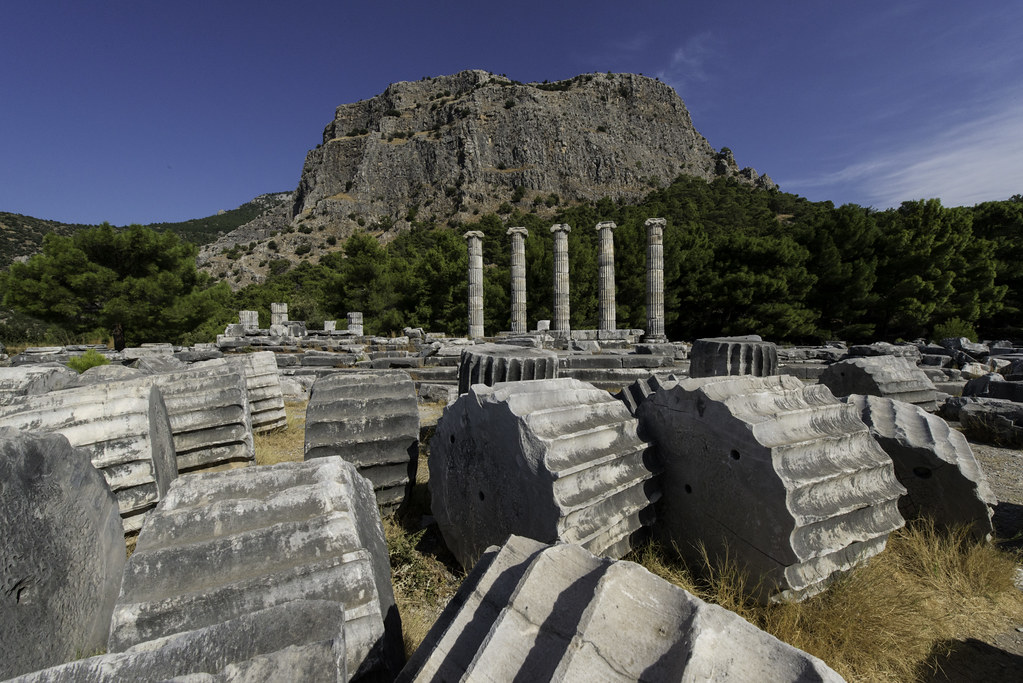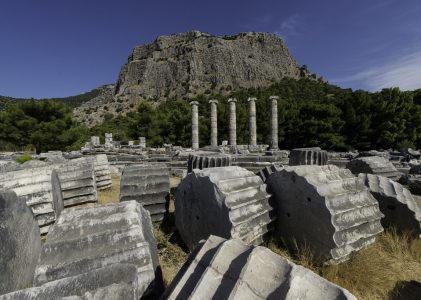The stories go, from Pausanias to Pliny, that Artemisia ground up the cremains of her lover with herbs and drank them with wine, becoming, in effect, his living tomb. No one knows if it’s true, but we do know that in the Fourth Century BC she completed a tomb for him which was ten stories of masonry, encircled with two sculpted friezes 134 meters long each, incorporated a portico which housed thirty-six monumental sculptures and supported a figural group at its top consisting of four horses pulling a chariot guided by her and her lover, the king; a king who was also her husband and brother. His name? Mausolus.
How do we make the decisions that lead to a grand building like that, involving many resources, an army of people and most of all a result we can never change? Artemisia was faced with the task of memorializing not only her brother, but the power of her family dynasty. The artists and architects she chose created an imposing monumental form that would dominate her city and be visible to people arriving there by ship for centuries. Citizens of Halicarnassus as well as visitors would have known the sumptuous carved reliefs and freestanding sculptures that adorned it. And because it was designed effectively, it impressed people deeply for over 1500 years, that is, until earthquakes toppled it.
For more details
Making the right decision is the central goal for those of us who are trained as design professionals. This series of posts aims at understanding what kinds of results the patrons and designers of such pure buildings were attempting to achieve and how they expressed their aims in physical form. I’ll write about themes, moving forward and backward chronologically, and both eastward to the ephemeral mausolea of samurai and westward to the tombs of the Gilded Age. What is so interesting about this kind of adventure is that through discovering an unusual monument, knowing nothing about it, we find, through online and traditional research, that an entire lost world of people and their lives opens up.
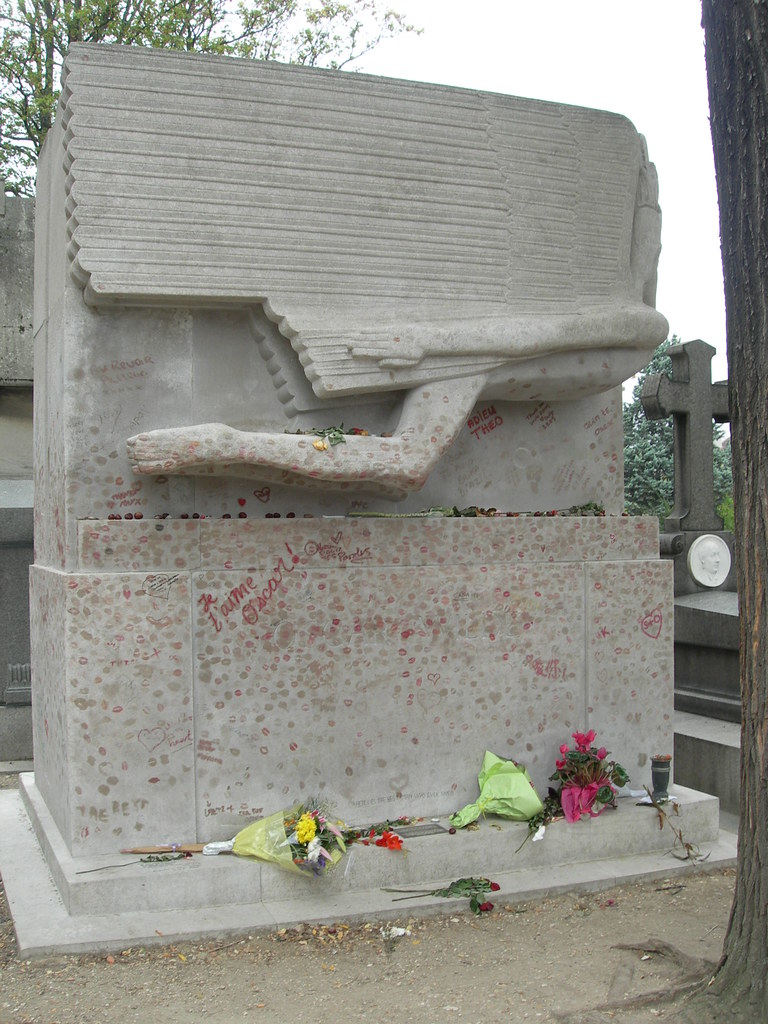
The Sphinx that commemorates Oscar Wilde at Pere Lachaise Cemetery in Paris isn’t obscure, but it incorporates many of these themes. There is, above all else, the tragedy of Oscar Wilde’s fall after his conviction on charges of gross indecency; the terrible accident he suffered in prison while doing hard labor which left him physically compromised for the remainder of his life; the descent from wealthy playwright to impoverished exile and death in a cheap Paris hotel. Perhaps because the story embodies his famous aphorism of life imitating art, his interment among many of the greatest luminaries in French literature seems appropriate. The importance of Pere Lachaise as the premier cemetery for the French elite incorporates the evolution of the rural cemetery and its influence on cemeteries throughout the western world with a concomitant rising urbanism that is reflected in the very loss of rural characteristics which had made it attractive in the first place. In future posts we’ll look into that story as well.
The Sphinx is the work of an American-English sculptor, Jacob Epstein, with an architectural setting created by architect Charles Holden. Arguably the modern, streamlined form of the Sphinx, which precedes the rise of Art Deco by more than a decade, has little to do with Wilde, who was closely allied with the Aesthetic Movement, or his work, which hewed to so many pre-modern roots. Yet it seems Epstein took as his start point one of Wilde’s poems by the same name, a work that he had developed over the course of two decades. The poem’s themes touch on sexuality, endless life, renunciation. The span of time it took Wilde to complete the work ranges form his early adulthood into middle age. Because of the breadth of artistic and intrinsic change over time, the choice of the sphinx, adorned on its crown with figures relating to Wilde’s story, if not its strong horizontals and stylized lines, seems apt. This figure was only Epstein’s second professional commission. One is left to wonder whether the thousands of annual pilgrims to the gravesite and the ritual kisses they leave on its surface with lipstick, substantiate Epstein’s decision to memorialize Wilde in this way.
For more details
https://www.gutenberg.org/files/1057/1057-h/1057-h.htm – page245
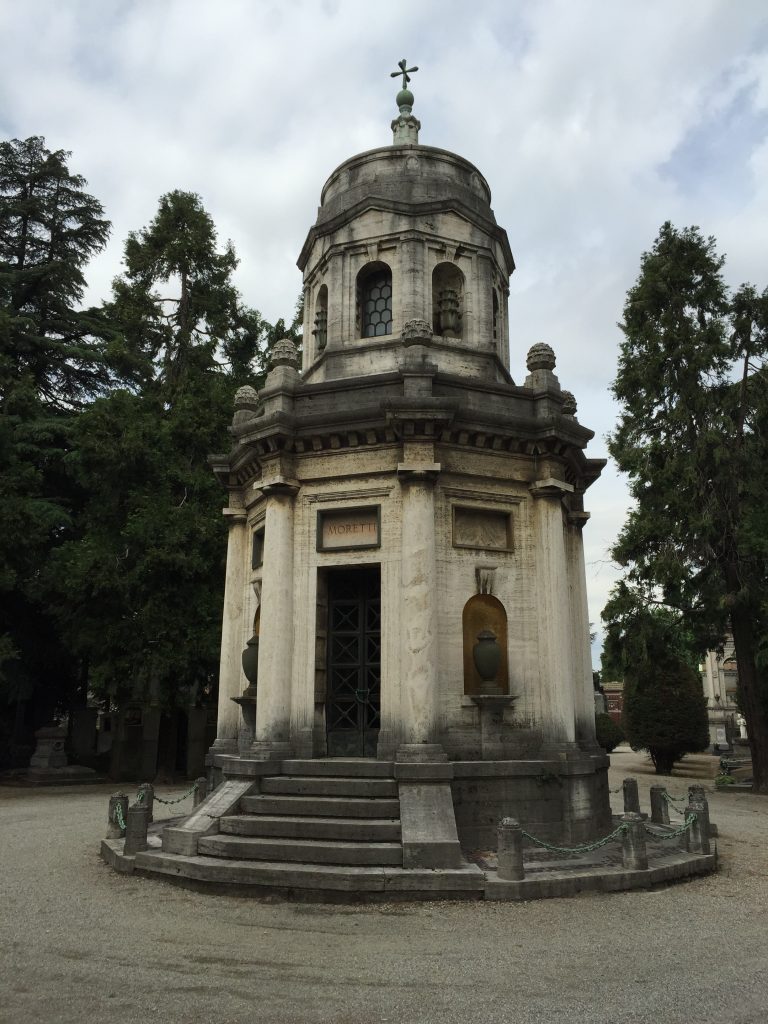
Elsewhere during the same period, we find plenty of evidence that designers were thinking about what it means to be modern and rethinking the role of architectural ornament in general. Art Nouveau designers were unleashing the taut planes of eclectic nineteenth century architecture and of traditional classical forms, releasing organic elements that were created by tours de force of the sculptor’s craft. In Italy, after the Turin Exposition of 1902, architects followed a related approach which appealed to the newly wealthy class of northern industrialists.
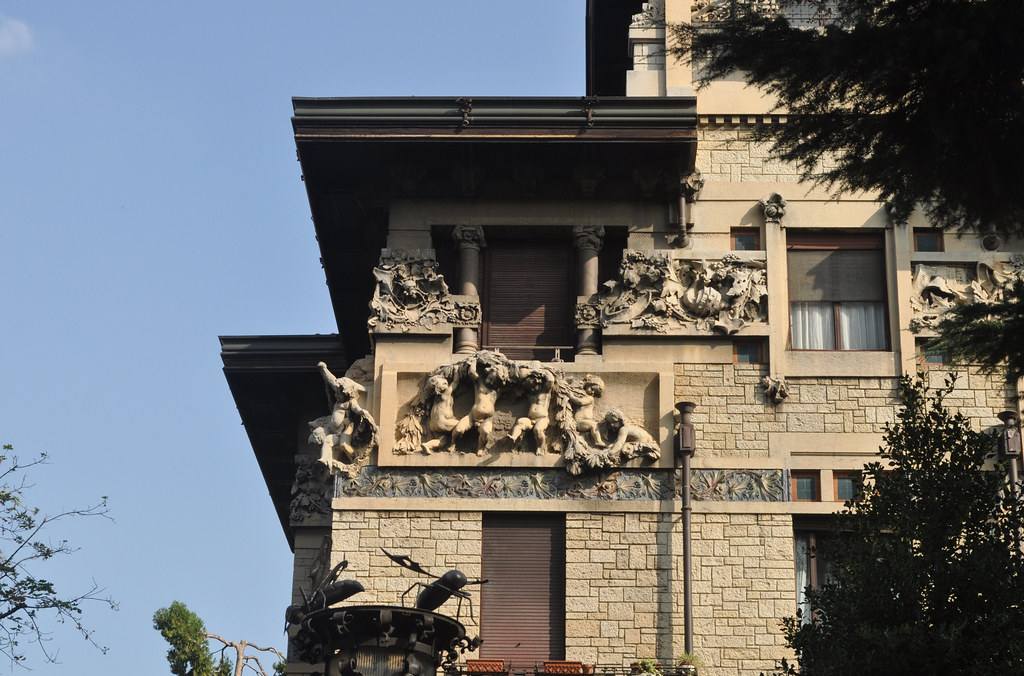
Some years ago one could visit Milan’s Cimitero Monumentale and peer inside the octagonal tomb of the Moretti family through its broken windows. The interior was dust-covered and forlorn, but its luxurious onyx revetment was intact. That the upper chamber was merely ceremonial and that openings in the floor led to a crypt below confirmed the use of the Italian word “edicola” to describe it in recent press articles.
An abandoned mausoleum which not only has an extraordinary exterior, but a rich interior as well, is irresistible. What is the story behind such a lavish monument and its subsequent decline over a mere 100 years? In trying to find answers to this question during this period of closed libraries and archives, I was able to go only so far. In recent years the tomb has been handed off to a new family who will have its use for a period of ninety-nine years. I learned that the family of the original patrons is extinct, that the tomb by law was therefore conceded to the city and that Milan has the right to lend it to one of the many families which await the opportunity to have a mausoleum in the Cimitero Monumentale, and then only for a limited period of time.
For more details
I was compelled to look into its history. Although there are many classical elements incorporated into its design, with its stylized classicism and peculiar moldings, the Moretti Tomb opened up the world of Milanese Stile Liberty buildings. The stylistic treatment is a clue to its authorship by Giuseppe Sommaruga, a preeminent Liberty architect of the period. Unlike other Liberty proponents, his personal approach was to blend classical elements with more organic forms and ornamentation. However, I discovered that he had two prominent colleagues with the surname Moretti. One would assume they would have designed any tomb commissioned by their own families. As well, online sources seem to confuse a smaller mausoleum by Sommaruga nearby with this one. The Moretti name is common enough that determining which industrialist family (beer, shipping, raincoats) may have been the original patrons remains unanswered. All of this renders it difficult to determine whether the recent rash of online articles about the transfer of rights cites the correct architect. The uncertainty serves to pique curiosity all the more.
For more details
Buildings, by their very nature, embody the stories of their creation and the messages their patrons wish to project. Later observers are rarely privy to the real history, but we know it when we come across a monument that’s skewed or clunky. The designers of Mausolus’s tomb created something massive, yet balanced. The sculptural adornment was rich, but subordinate to the overall form. This idea of a hierarchy of the elements that impact visitors at various scales or from various distances is one of the great tools designers use whether designing a tomb or a tea service. Epstein used another in his work for Wilde’s grave, the history and legacy of an individual. The sculpture he created is asymmetrical, stable, strong in overall form, and like King Mausolus’s tomb, detailed with smaller narrative elements. The Moretti tomb offers us a similar confident presence in the landscape. Looking at it in a photograph we might be inclined to edit the scale of the lantern up or down, but stumbling upon this majestic tempietto on a first visit to the Cimitero Monumentale and considering it in the liberated, experimental context of Stile Liberty, we can see how its patrons concluded that they had made the right decision. They were then free to recede gradually into extinction and obscurity.
Opening image of Halicarnassus: Priene – I: The Temple of Athena Polias” by Egisto Sani is licensed under CC BY-NC-SA 2.0
